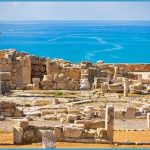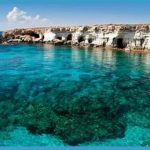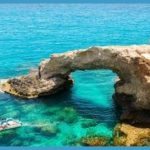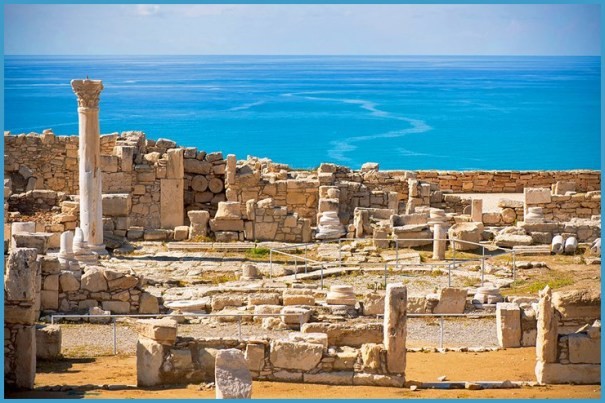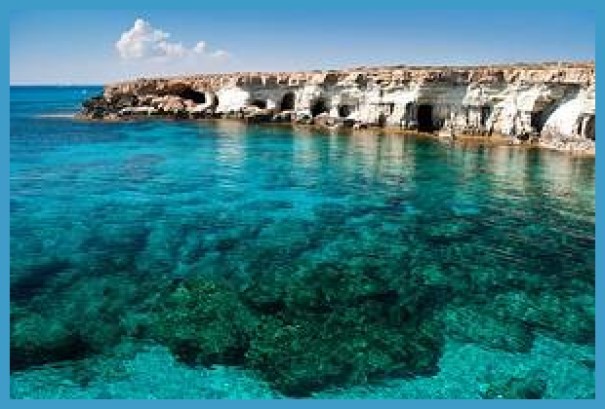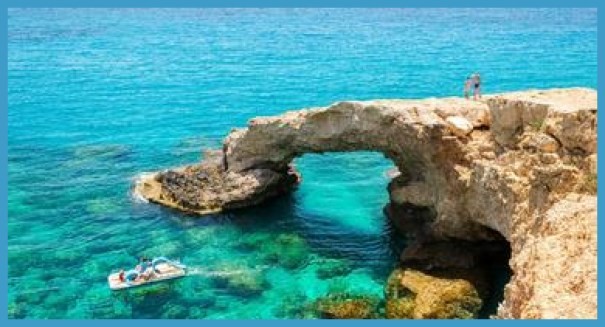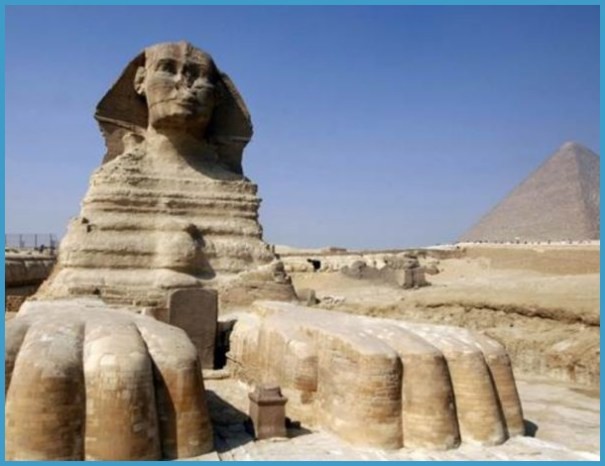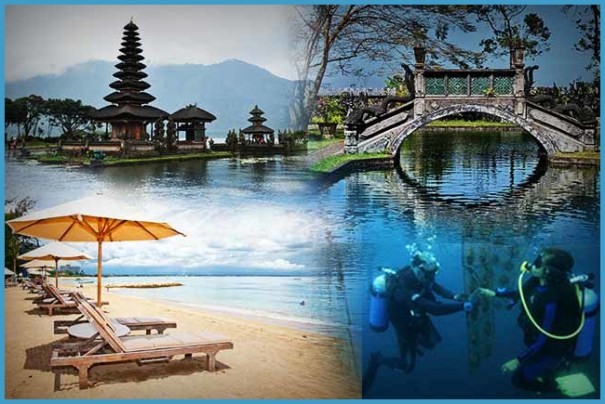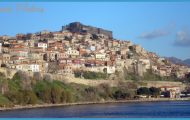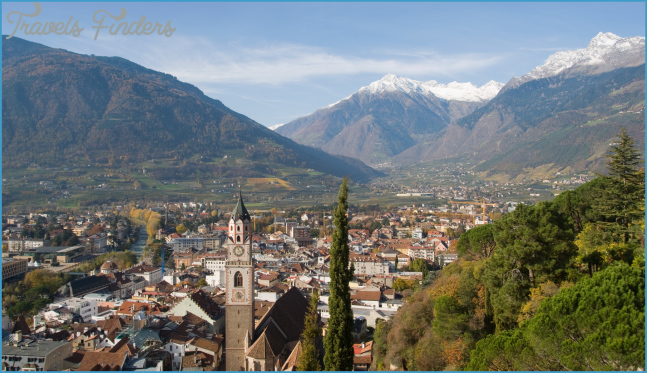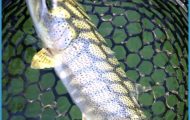Trimiklini (Saittas) dam
Filagra on the left bank of Kouris, is a hamlet, one of the extremely few hamlets existing in Cyprus. The few dwellings on both sides of the main road, are used mainly as summer houses. Kato Amiantos. Kyprianos mentions that Amiantos was a large village, famous during the Roman times of its asbestos. Close to the central cafe of the village stand the relics of the old water-mill. It is here that a khan was situated, frequented by travellers from Morfou and Lefka on their way to Limassol. Tradition wants the Baths of Aphrodite to be lying north of the village where Rigaina, the queen of Cyprus, used to take her bath during the summer months. Karvounas is a very impressive saddle, between Troodos and Madari, being simultaneously a water divide separating the waters of Kouris and Kargotis. Pano Amiantos comprises the asbestos mine which started functioning after 1904, though it was well known much earlier. Judging from the writings of travellers and writers, asbestos extraction was carried out in ancient times. It was known to Hippocrates, Kallimachos, Strabo and many others. The ancient writer Apollonios as well as the doctor and historian Dioskourides mention the asbestos of
Cyprus. Kyprianos calls it cotton stone, whereas Lusignan likens the asbestos veins to human veins. The British granted rights of asbestos exploitation to Trombetta, who subsequently passed on the right to an Austrian Company. In 1942 the mine passed to four European countries and since then a systematic exploitation of the ore started. The method of mining was open cast. At the beginning the transportation of ore was carried out by overhead railway ending up in Limassol, while, a few years before the closing of the mine, lorries transported the ore to the port of export. Currently, the mine has been abandoned, with its scars visible on the landscape.
Top-Rated Tourist Attractions in Cyprus Photo Gallery
c) Villages south of Troodos
Route: Moniatis, Pano Platres, Arkolachania, Kalidonia Falls, Kato
Platres, Foini
Moniatis settlement is hidden amid rich and varied natural vegetation as well as dense deciduous trees. Within the village one can single out the medieval church of Archangelos Michail, which was restored in 1717. The church hosts a beautiful wood-carved iconostasis, a wooden cross and some old portable icons. Pano Platres is one of the few Cypriot villages which have adapted their buildings and particularly their hotels to the natural environment. Since the first decades of our century Pano Platres has been christened the king of Cyprus mountainous resorts. Kings and governors, enterpreneurs and millionaires, top writers and artists have been hosted in its hotels. Seferis, the noble laureate, impressed by the environment of Plates, wrote the following verse in his poem Eleni. “Nightingales do not permit you to sleep at PlatresThe visitor to Platres should not neglect to visit Psilo Dentro and sit for a few moments under the shade of the plane and the walnut trees. Close by and on the river bed a fishery has recently been set up, worth visiting. A few visits to neighbouring sites of interest, like Kalidonia Falls, Mesapotamos and Arkolachania, are recommended. Arkolachania, a picnic site, can be visited via Kato Amiantos, Saittas, Moniatis or even Platres.
Cyprus holidays | Travel
Mesapotamos falls
Probably the earthen road through Saittas could be chosen. Close by is the Mesapotamos falls, which could be called double rapids. The waters drop onto a platform and then onto a second one. Close by is also the old monastery of Mesapotamos which was founded in the 12th century. It is also probable that the dissolution of the monastery commenced during the Turkish rule and was completed during the first decade of the British rule. Currently, the church is steep-pitched and single-aisled, while the monastery building is two-storeyed. A coffee bar functions during the summer months under the shade of pine and plane-trees. Kalidonia falls, situated 3,5km north of Platres, have a height of 12 metres, exhibiting all characteristics of real falls. The rapids drop very abruptly, because they meet resistant gabbro rocks which have not yet been eroded away. At the base of the falls a pool has been formed, while the vapour produced spreads to some distance around. Kato Platres was known in the past by the name of Tornarides, from the numerous tornoi (wheels from which pottery was manufactured). Despite its beautiful and picturesque landscape, Kato Platres has not yet developed tourism, though urban dwellers, particularly from Limassol, build expensive villas. Foini is more famous for its pottery handicraft than for its picturesque landscape, its pleasant summer climate and its noteworthy cultural monuments. The inhabitants of Foini quite early located the red clay that existed in their village area and soon converted their houses into workshops of jars, “pitharia” (wine jars), bowls and lots of other pottery products. However, the number of potters has currently declined with a few women still pursuing this centuries-old craft of Foini. The emigre Theofanis Pilavakis, spent time and money to set up a museum, in the center of Foini, by collecting all types of pottery made by the inhabitants in the past centuries. It is a remarkable museum worth visiting. In the village lies one of the few waterfalls of Cyprus, namely that of Chantara. A fishery for trout production lies nearby. The monastery of Agioi Anargyroi was built in the 15th century, though, unfortunately, a fire in 1963 destroyed the church completely. It was rebuilt on the same site.
d) Around Troodos
Route: Troodos and the peak of Olympos, Nature trails
Troodos is the central mountain range of Cyprus with Olympos or Chionistra its highest peak (1951m), visible from all parts of Cyprus. Very often the snow on Troodos is heavy, enough to break the branches and the tender tips of the pine-trees. According to tradition, on the peak of Olympos there stood a temple of Venus (Aphrodite), while according to another tradition during the early Christian times close to Olympos peak stood various churches, though their remnants are no longer traceable. However, it is often mentioned that the foundations of the church of the Holy Cross were traced in 1910. Close by was the church of Archangelos Michail as well. It is also cited by authors, like Gunnis, that a Venetian wall was constructed on Olympos, though currently only mounds of igneous rocks arrayed in a straight line can be seen south of Chionistra. What is certain is that remnants of ice pits, where ice was preserved, still survive. The ice was transported late at night from Troodos to the towns. According to Italian priest and historian G. Mariti, the transportation of ice was carried out for centuries. Skiing at Troodos is a favourite sport for some Cypriots and a few foreigners alike.
Nature Trails in Troodos. Locals and foreigners can enjoy a few nature trails in Troodos during the four seasons of the year. Some of them are described below:
(a) Persephone Trail (Makria Kontarka). The trail starts from the local coffee-shop in Troodos and covers a return distance of about 6km on hard resistant rocks. The trail is about 1,5m wide with interesting types of vegetation on both sides. You meet the Troodos pine tree, which grows exclusively on the high peaks of Troodos, the wild apple-tree, the Troodos juniper, the sage, the rockrose and others. In autumn, fern takes a gentle yellow colour and appears as an extensive yellow carpet. The trail crosses nice stands with a superb view around.
(b) Kalidonia trail (Kryos Potamos-Kalidonia Waterfalls). The trail between Kryos Potamos and Kalidonia waterfalls, about 2km long, offers to those who follow it pictures of unsurpassed beauty. Kryos Potamos, tributary of Kouris, with its running waters all the year around together with its youthful, steep-sided, deep valley is the dominant feature of the trail. The luxurious vegetation along the trail includes chestnut trees, wild apple trees, wild plum-trees, Troodos juniper, gorse, fern, golden oak and bramble. Certainly, the very tall straight pinetrees, the alder, the plane-trees, the poplar-trees with ivy and lichens around their trunks are impressive. The end of the trail is the Kalidonia falls.
(c) The Atalanta Trail (Troodos Post Office – Chrome Mine). It is a 9km long trail round Olympos. You pass over eroded and weathered rocks with naked ground. The relief on the eastern part of the trail is more gentle, while on the western parts the scenery appears wild and rugged with deep, steep-sided valleys. You enjoy, while walking, the cool climate of Troodos, particularly during the summer months. Despite the fact that natural vegetation is not dense, nevertheless many forest trees and bushes appear before your eyes. Excellent views are offered from various spots towards the villages of Limassol, Pafos and Nicosia districts.
(d) Artemis Trail (Olympos circular trail). The trail, about 7km long, starts at the crossroads of the Chionistra and Troodos-Prodromos roads and proceeds in a circle round Olympos. You will encounter a variety of ophiolite rocks, like dunite, pyroxenite, harzburgite, pegmatitic pyroxenitic gabbro as well as a large variety of plants, like black pine trees, Troodos alyssum , sage, rockrose, etc. The installation of the Cyprus Ski Federation can also be seen.

